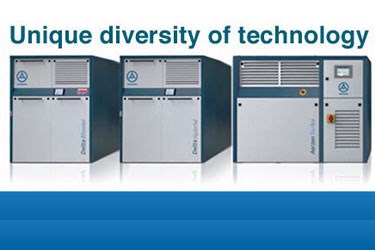Ask The Experts Q&A: The Truth About Blower Selection

With aeration accounting for about 60 percent of the electric bill for a wastewater treatment plant, the more efficient you can produce that air, the more money you’re going to save. There are a number of different strategies for dealing with this challenge, in this article we ask Aerzen for their approach.
Energy consumption, the rising cost of energy, and aeration go hand in hand, and present plant operators with one of their toughest challenges. That’s got to be something top of mind for how Aerzen helps its customers, right?
Absolutely. Powering the aeration blower system is approximately 60% of the electric bill for a wastewater treatment plant. Therefore, the more efficient a plant can produce that air, the more savings that can be realized and the more efficiently that plant can run overall. There are a number of different approaches to dealing with this challenge, but you have to be careful though. One cannot simply choose a blower because it’s “efficient.” If there are limitations on that technology due to a plant’s specific treatment conditions (max and min flows, pressure swings, on-off cycles, etc.), you might find that you’ve installed something that’s not going to run properly – and more to the point, efficiently.
So it becomes tricky as far as selecting the proper technology for a plant’s specific needs. That’s where Aerzen comes in - we have all three of these technologies available - the standard PD Blower, the Turbo, and the Hybrid - so we can actually work with the customer to assess their environment and help guide them toward the right solution.
There’s a good bit of complexity in figuring out exactly what is needed at particular plant. How do you help plant operators and engineers figure that out?
Good question. When an engineer is designing an upgrade for a wastewater treatment plant, the blower is only one portion of the overall design and they don’t want to turn this into a big science project. As much as it can impact the energy costs of the overall plant, it’s just another task for the engineer so the easier we can make it for that engineer to give them a little guidance, the more impact we’re going to have on them.
Aerzen developed a how-to guide, An Engineer's Mini-Guide To Blower Technology Selection, that allows the engineer to fill in a plant’s specific application data and get a recommendation for the best blower technology for energy efficiency and reliability. Once the right technology is selected, then we can start to talk about sizing and talk about the efficiency throughout that range.
We look at ourselves as applications specialists available to guide that engineer or plant operator towards that right technology.
How much money can be saved once a plant has right design?
If they’ve got the proper design, in just the aeration blower system, i.e. providing the source of the air, a plant could save 20% to 30% on its energy consumption.
As a specific example, we had a site in New York (Huntington) utilized a Sequencing Batch Reactor (SBR) system, rated for 1.2 MGD. The high cost of electricity ($0.19/kWh) resulted in the plant spending approximately $230,000/year to supply power to the SBR blowers, which were conventional, 2-Lobe PD blowers. Aerzen supplied a Delta Hybrid for a side-by-side comparison. The owner installed kilowatt-hour meters on each blower, and ran the two units in parallel. Power readings were taken four times per day. The resulting power savings was 29%, which translated to annual savings of $80,000 per year. This site was unique in comparison to other regions of the country, between the high power cost and the relatively high pressure in the SBR (11.6 PSIG). However, it serves as an example of the potential savings that can be realized by having the right technology in place.
To be able to save in the range of 25-30% annually, irrespective of the regional energy cost, will add up significantly over time. And that’s why we believe it is so critical to have the right blower technology selected.
